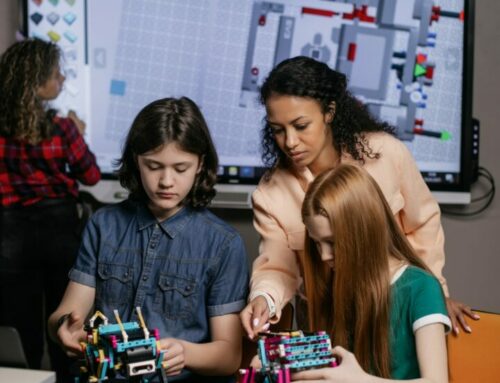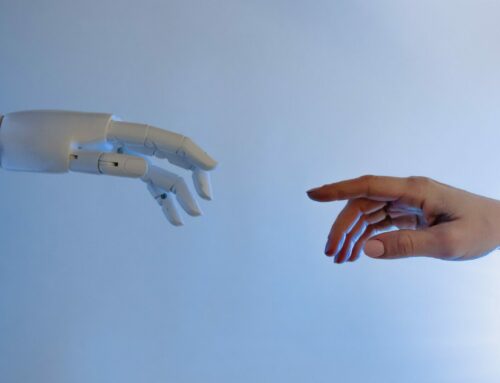Shaping Learning Futures with Lifelong Learning
Patrick Blessinger and Filipe de Castro Soeiro
For the past 12 millennia, humanity has undergone a series of revolutions that have allowed it to dominate every aspect of the planet. Beginning with the First Agricultural Revolution (Neolithic period) around 10,000 BCE, humans began transitioning from hunter-gathers to permanent farming settlements based on animal domestication and plant cultivation for human food production and consumption. This revolution was likely triggered by climate change (end of the Paleolithic Ice Age) as well an increase in local populations (urbanization).
This transition represents a radical change in humans’ survival strategies where humans began to adapt the environment to fits their needs rather than simply adapting to the whims of the environment as all other species do. For instance, through domestication, humans created artificial environments where selected livestock and plants were separated from their wild counterparts in order to serve human needs. In this type of artificial environment, animal and plant reproductive options are controlled (for example, artificial selection) to yield human preferred traits.
Because these early social communities of the Holocene Epoch had to learn how to manage the life cycle of animals and plants, humans experienced a significant increase in human knowledge and learning, which would, for better or worse, forever alter the planet and humans’ relationship to it. Presumably, people in these early settlements had to experiment in systematic and organized ways in order to develop the processes, methods, and tools needed to support a growing population. Thus, the production of knowledge through human learning, in ways never before seen, became all-important to human survival.
Settling down
The transition from a nomadic to a non-nomadic lifestyle allowed humans to establish a readily accessible source of food for the first time in their history. In addition to a food source, the widespread domestication of plants and animals served a variety of other purposes as well (for example, hides for clothing, bones for tools, animals for labor as well as protection and companionship as in the case of wolves and cats), and it suggests that human intelligence advanced relatively rapidly during this timeframe.
By living in social communities focused on farming, humans also began to make advances politically, economically, socio-culturally, and technologically. As such, human societies became increasingly complex in all aspects. The way humans live today in communities, in large part, can be traced to the foundations laid (for example, tiered political and social structures, institutions, specialization of labor, private property, trade/money) during the Neolithic era.
Living in fixed communities required humans to learn how to develop new technologies (e.g., tools, machinery, metalworking, record-keeping, irrigation, food/water storage, communication), learn how to live together in a state of interdependency, and learn how to develop new political forms of social governance. More densely populated fixed communities also led to increased interpersonal conflict, social stratification, deforestation, and increased exposure to diseases, among other negative effects.
New social order
For the first time in human history, human learning and knowledge production became central to daily life and human survival and progress. Although archeological evidence is scant, it is reasonable to presume that this new social way of living also required humans to dramatically improve their oral and visual communication skills, which, in turn, likely further improved their language and cognitive development.
For the Neolithic era, there is sufficient indirect evidence (for example, development of government, commerce, religion, culture, art) to presume that oral and visual language served as an essential means to communicate in an increasingly complex society. Since communication likely facilitated the new social order, cognitive and social intelligence became critical to daily life.
As humans used their brains in ways never before required, they were unknowingly laying the foundation for the next significant development of human evolution – the development of written language around 3,000 BCE. Presumably, as social communities became more complex, the need for standardized forms of communication, record-keeping, and transcription/codification of knowledge became increasingly important.
Standardized communication
Language is one of the main characteristics distinguishing humans from the rest of the animal kingdom. Whereas oral language facilitated the development of social communities, the development of written language allowed social communities to become more complex and multifaceted in order to serve the growing needs of the community.
By learning to communicate using symbols, humans not only developed their higher-order cognitive abilities and not only developed more sophisticated and wide-ranging political, economic, and social communities, but they were also able to begin breaking the shackles, link by link, previously imposed on them by natural selection.
However, literacy (reading and writing) was likely limited to a small fraction of people in society (for example, the ruling class, merchants, clergy). Nonetheless, standardized reading and writing development paved the way for later developments (for example, the Printing Revolution in 1450 CE) that helped create more literate societies and the future global knowledge society.
Rights-based approach
Literacy is no longer a privilege but a basic necessity of life, like food, water, clothing, and shelter. Furthermore, modern societies have become so complex, interconnected, and interdependent that most people now require prolonged periods of formal education. Indeed, lifelong and lifewide learning is now considered a human right.
Today, not only is universal education treated as a human right, but education is moving towards a new set of literacies (for example, problem-solving and metacognitive literacies, critical and creative thinking literacies, humanistic literacies). In today’s global knowledge society, a one-size-fits-all approach to education cannot address the many hypercomplex issues facing the world (for example, technology disruptive advancements, climate change, pollution, poverty, illiteracy, species extinctions, deforestation).
Thus, a rights-based approach to education at all levels, coupled with technology convergence and sustainable development goals, is best positioned to address the world’s growing problems and needs since it provides a sensible roadmap for steering humanity in the right direction for the 21st century and beyond. A rights-based approach is grounded in a humanistic paradigm based on democratic principles of human agency, dignity, and development.
Shaping learning futures
In the Neolithic era, human learning mainly centered on informal learning since no formal education systems for the masses existed. As written languages became more widespread, especially with the invention of the printing press in the 15th century, the idea of mass literacy began to gain traction.
As professions, crafts/trades, and the arts developed and became more complex, relatively unstructured types of informal learning (for example, socialization/enculturation, incidental/random learning, play/exploration learning) were gradually supplemented by more structured types of non-formal learning (for example, apprenticeships, on-the-job training). As societies became more advanced technologically, non-formal learning was gradually augmented by highly structured types of formal learning (that is, modern educational systems). Now all three types of learning exist side by side in complex ways.
As today’s global knowledge society becomes increasingly interconnected, it is likely that these three types of learning will also become increasingly interconnected. For instance, there has been an explosion of new self-directed e-learning platforms such as Khan Academy and OpenCourseWare, among many others. As such, how we socialize and educate youth will be influenced by what adults learn through these various systems of learning.
The emerging social, economic, and technological trends will network everything on our planet and beyond (for example, the Internet of Things). Big data will continue to get bigger, as will mobile computing, and global wireless and GPS technologies. On the other end of the scale, smart wearables will become more pervasive, as will augmented technologies, nanotechnologies, and quantum computing, further blurring the line between virtual and real. Advances in biotech, digitally assisted genome editing, and genetic engineering will continue to extend and enhance life. Artificial neural networks and the rise of the “human-machine”, as well as other forms of hybrid intelligence, will create a future society with many possibilities but also with many concerns.
Within the context of this emerging world, new laws and codes (for example, security and privacy laws, enhanced professional/ethical codes) will be challenged to keep up and stay relevant. The so-called Society 5.0 will be a global knowledge-based society that aims for a prosperous and augmented human-centered system in which cyber and physical systems are developed to solve challenges and create new societal values that increase significantly and sustainably the quality of life and extend the scope of human activity.
This emerging learning paradigm will bring both challenges and opportunities which will combine the imagination and creativity of diverse people with digital transformation for problem-solving and value creation towards a more sustainable life and planet. Although these innovations will continue to bring about technological and educational disruption, they will also provide people with the opportunity to engage in meaningful ways to engage in lifelong and lifewide learning (for example, competence-based and work-based learning). Thus, one of the key issues for the future of education is to provide all people the right to learn throughout the entire course of their lives in the most relevant and impactful way.
Dr. Patrick Blessinger is an adjunct associate professor of education at St John’s University, New York City, and chief research scientist for the International Higher Education Teaching and Learning Association or HETL.
Professor Dr. Filipe de Castro Soeiro is the president and rector of the XU Exponential University of Applied Sciences, and professor and researcher of digital transformation and Industry 4.0, Potsdam, Germany.
Suggested Citation:
Blessinger, P. and de Castro Soeiro, F. (2022). Shaping Learning Futures with Lifelong Learning, Higher Education Tomorrow, Volume 8, Article 2. www.patrickblessinger.com/shaping-learning-futures-with-lifelong-learning
Copyright © [2022] Patrick Blessinger and Filipe de Castro Soeiro
Disclaimer
Opinions expressed in this article are those of the author, and as such do not necessarily represent the position(s) of other professionals or any institution.




